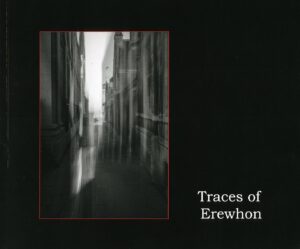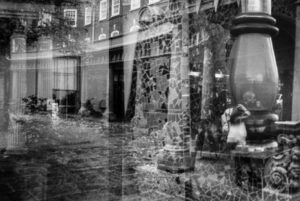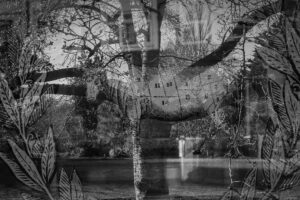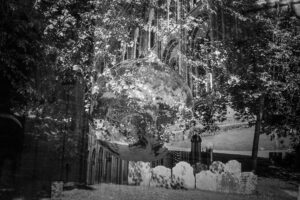I have posted 37 pictures under the heading Traces of Erewhon since August 2021. They were the results of experiments in trying to produce a set of images that embodied the concept of Erewhon/No where. That project is now complete and the work exists as a book, Traces of Erewhon. An Afterword in the book explains my thinking this is set out below and is followed by three examples of the text and final photographs.
Afterword
Erewhon: or, Over the Range is a novel (1872) by Samuel Butler set in a fictional country discovered and explored by the protagonist, Higgs. The early chapters, dealing with the discovery of Erewhon, are based on Butler’s own experiences in New Zealand working as a sheep farmer.
The most significant parts of the book consist of a description of Erewhon. The nature of the country is deliberately ambiguous: at first glance, Erewhon appears to be a Utopia, yet Higgs finds that this is far from the case, and to modern eyes it surely appears dystopian.
The novel is a satire on Victorian society through its exploration of criminal punishment, religion, and anthropocentrism. In Erewhonian law, offenders are treated as if they were ill, whereas people who are ill are looked upon as criminals.
Butler’s novel was one of the first to explore ideas of artificial intelligence, showing the influence of Darwin’s On the Origin of Species (1859) and the increasingly sophisticated machines developed during the Industrial Revolution. In Erewhon Higgs discovers an absence of machines, which are considered dangerous because of their potential for consciousness and self-replication.
Traces of Erewhon reproduces edited extracts from the novel that draw out the strangeness of the place and the beliefs of its people. The photographs merge place, perspective and scale in an attempt to create an imaginary nowhere, a visual Erewhon. Text and photographs* are presented together, but the former are not to be read as captions for the latter: they are intended to create parallel narratives of journeys.
* The photographs were made in a camera using film, analog photography.
“There is no security against the ultimate development of mechanical consciousness, in the fact of machines possessing little consciousness now. Assume for the sake of argument that conscious beings have existed for some twenty million years: see what strides machines have made in the last thousand! Is it not plain that machines are gaining ground upon us, when we reflect on the increasing number of those who are bound down to them as slaves, and of those who devote their whole souls to the advancement of the mechanical kingdom.”
They ascribe moral defects to the effect of misfortune either in character or surroundings. Ill luck of any kind, or even ill treatment at the hands of others, is considered an offence against society. All ordinary greeting, such as, How do you do? and the like, are considered signs of gross ill-breeding. They are only more lenient towards the diseases of the young – such as measles, which they think to be like sowing one’s wild oats – and look over them as pardonable indiscretions if they have not been too serious, and if they are atoned for by complete subsequent recovery.
The Erewhonians say they we are drawn through life backwards; or again, that we go onwards into the future as into a dark corridor, Time walks beside us and flings back shutters as we advance; but the light thus given often dazzles us, and deepens the darkness which is in front of us. Sometimes, again, they say that there was a race of men upon the earth once, who knew the future better than the past, but they had died in a twelvemonth from the misery which their knowledge caused them.




